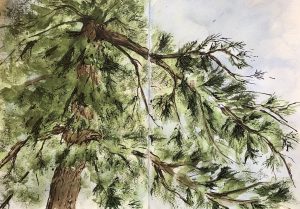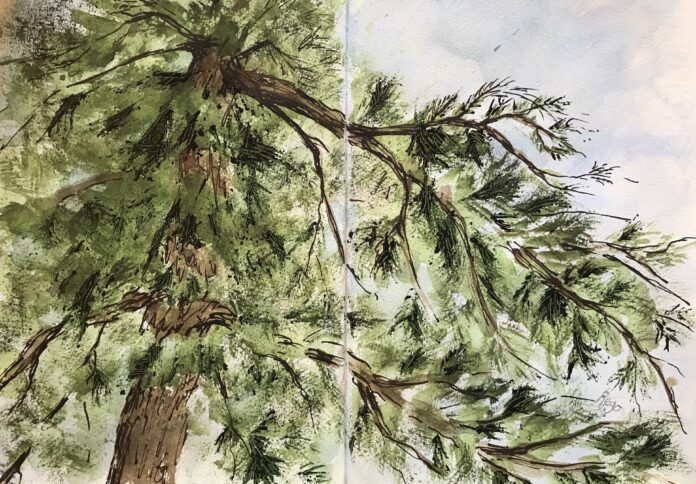BY LESLIE REGO
 There is nothing as spicy as the fragrance of a pine tree. The dampness of freshly fallen snow clinging to pine needles brings out the heady aroma. It is a smell of nostalgia, of hours spent hiking in forests in the summertime, hours skiing along winter trails or down Baldy. It is also the smell of Christmas.
There is nothing as spicy as the fragrance of a pine tree. The dampness of freshly fallen snow clinging to pine needles brings out the heady aroma. It is a smell of nostalgia, of hours spent hiking in forests in the summertime, hours skiing along winter trails or down Baldy. It is also the smell of Christmas.
A Christmas tradition is to make garlands and wreaths out of long lengths of pine branches. But pine needles have been used historically throughout the seasons. Baskets, dating back 9,000 years, were made with pine needles employing a technique called coiling. The Seminole Indians in North America were one of the first tribes to utilize pine needles in the fabrication of baskets. These baskets were so tightly woven they could store or carry water.
After the needles were coiled, they were sewn in place with homespun thread, raffia, or linen-like grass. Decorative stitchwork, such as buttonhole, fern, crow’s foot, chain, diamond, or wheat, added to the beauty of the baskets. It is easy to imagine the form of the stitch through the descriptive name.
Pine needles have antiseptic qualities. A poultice made with the needles disinfects cuts and scrapes. A pine needle foot bath can help to prevent fungal infections, or can relieve swollen or throbbing feet.
Pine needles are high in vitamin C, critical for the production of collagen, a protein that keeps the skin smooth. An infusion made with pine needles is highly astringent, thus tightening the skin. It can also reduce the size of pores, diminish fine wrinkles, improve acne or, if plastered on the scalp, treat dandruff.
The pine tree has a long and illustrious history in our nation. The pine needle was important medicinally and for household goods. The wood was primary used for shipbuilding, house construction, furniture, and other forms of carpentry.
The aromatic smell of the Christmas tree triggers many nostalgic Christmas moments. This year I will focus on the pine needle and give it equal reverence in my Christmas bank of memories.
Leslie Rego is an Idaho Press Club award-winning columnist, artist and Blaine County resident. To view more of Rego’s art, visit leslierego.com.



